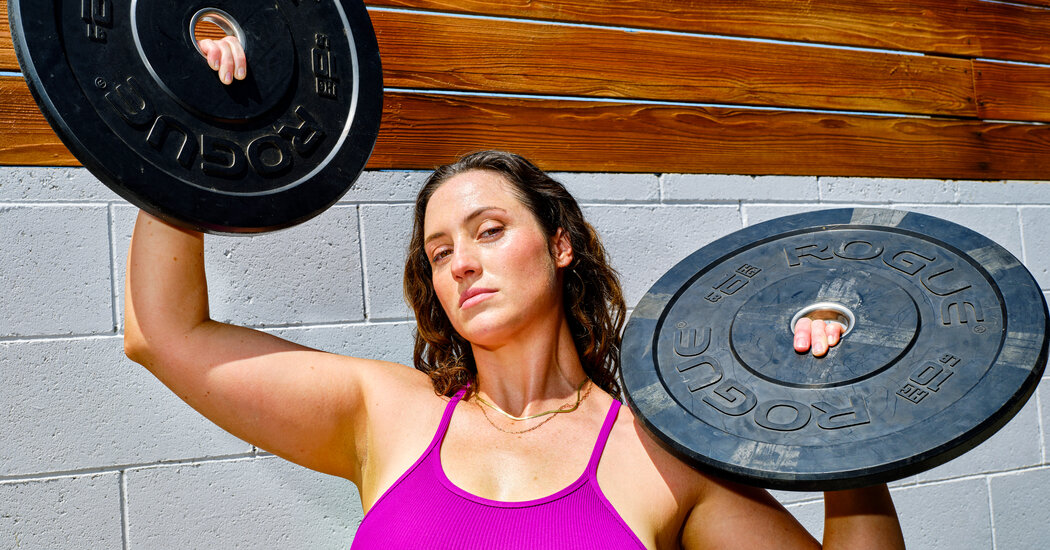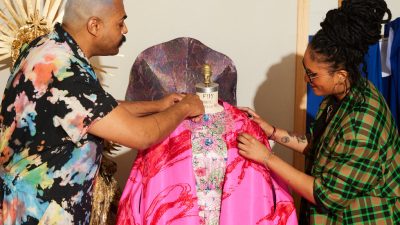More Than Likes is a series about social media personalities who are trying to do positive things for their communities.
The video begins with an instructor and a barbell, like so many others on Instagram. But then, as Casey Johnston, the instructor, dead-lifts the barbell — 45 pounds, plus 160 more pounds’ worth of weights — to her waist, an annotation appears in the corner: “Things we have to pick up regularly that weigh 25+ lbs.” It then lists examples like suitcases, coolers, furniture and so forth.
Ms. Johnston, 36, has built an online community around both championing the functional benefits of strength training and demystifying a form of exercise that can be intimidating to those on the outside. For Ms. Johnston, lifting is about taking ownership of one’s body.
She does not promise the secret to washboard abs or a slimmer waist, as many fitness influencers do. Ms. Johnston, instead, provides her 34,000-plus Instagram followers and nearly 25,000 subscribers to her She’s a Beast newsletter with the tools to build a body that can more seamlessly move through everyday life. And she writes sharp, incisive takes on modern discourse surrounding fitness, eating and other related subjects.
“It’s often guilt, guilt, guilt. You’re never doing enough,” Ms. Johnston said of the mainstream fitness climate. For her, gym sessions are “not about experiencing the most pain you can tolerate. They’re about building a basic skill that is accessible to everybody.”
In Ms. Johnston’s experience, that difference, in turn, can lead to better emotional and mental health. “This becomes a gratifying feedback loop, where it’s like, oh, ‘I can get stronger, and my body doesn’t just exist to either be a meat sack that holds my brain in, or to look attractive to other people’,” she said.
Ms. Johnston, who was an editor at Wirecutter, a New York Times Company that reviews products, from 2014 to 2018, began writing her Ask a Swole Woman column for the site Hairpin in 2016 (“swole” means very muscular). She found that her writing resonated with readers hungry for more accessible fitness writing, and after the site shut down in early 2018, her column bounced around before becoming part of the paid version of her newsletter. She has also written an e-book, “LIFTOFF: Couch to Barbell,” which is marketed as a “weight lifting guide for the rest of us” (it has sold more than 10,000 copies), and she has a channel on the social app Discord, where she directly connects with readers.
Before she started lifting, Ms. Johnston focused on running and limiting calories as a way to pursue the kind of body that had been glorified when she was growing up in the late 1990s and early 2000s. That pursuit was laced with negativity.
“I think people who are about my age grew up in an extremely difficult time in terms of the way the media acted toward women and ridiculed them for the tiniest flaws,” Ms. Johnston said. “There was such entitlement in the media to police how women looked, or the way they conducted themselves in public. Britney Spears is probably our most canonical example of this, where there were constant headlines about if her weight fluctuated.”
In 2013, Ms. Johnston stumbled upon a Reddit post featuring a female bodybuilder that piqued her interest. She was ready for a change: She wasn’t eating much, and her hands and feet were often cold. Through lifting, she realized, she could more smartly balance her food intake and exercise. But she’s not here to judge other approaches.
“I’m radically accepting of whatever it is that people want to do. I’m not here to argue with them about what they think works,” Ms. Johnston said of those who prefer other forms of exercise to weight lifting. “My only position is that I think strength training gets a bad rap.”
The first time she went to the gym — an “intimidating place,” she said — she pushed aside her feelings of insecurity and performed three exercises: squats, benches and rows, three sets each of five “reps,” or repetitions.
Then, she said, she made a beeline for the bodega. “I became so hungry,” Ms. Johnston said. “My body is, like, demanding its feast after going to battle.”
Ms. Johnston soon began structuring meals around her lifting, eating more protein and carbohydrates. She delighted in her newfound strength.
“She’s constantly thinking about her body as this system,” Seamus McKiernan, her partner, said. “What’s going into it? And what you can make it do? And how it can make you feel better and do more?”
Her platforms give “people a place where they know they are with other people who are on the same page that they are, where they’re oriented toward more functionality and a sustainable practice,” Ms. Johnston said.
Her friend Choire Sicha, an editor-at-large at New York magazine and the former editor of the Styles section at The New York Times, bought Ms. Johnston’s e-book in 2021. After sitting at his desk for long hours during the pandemic, he realized his body was on the verge of “deteriorating” and challenged himself to do something that made him “profoundly uncomfortable,” as Mr. Sicha put it. He became a volunteer firefighter but realized that he needed to build strength.
He turned to Ms. Johnston’s guide to lifting and found that the philosophy that undergirded her work resonated.
“She knows that we’re not all going to be champion weight lifters, and she knows that we’re not all going to look pretty when we do it,” Mr. Sicha said. “It’s just very anti-Instagram-aesthetic. It’s very pro-human.”
Sumber: www.nytimes.com










